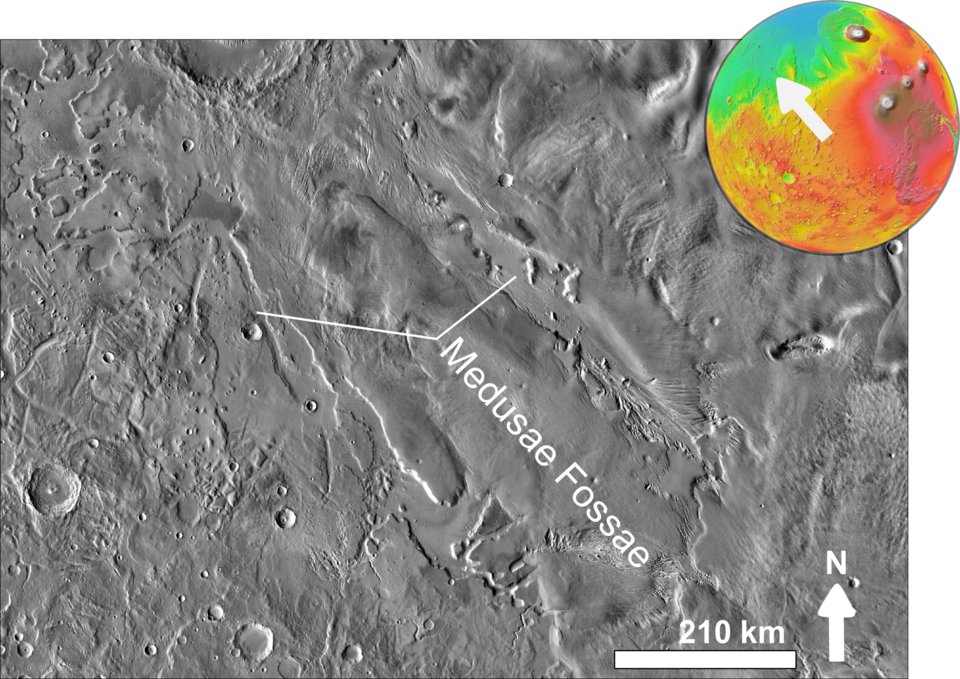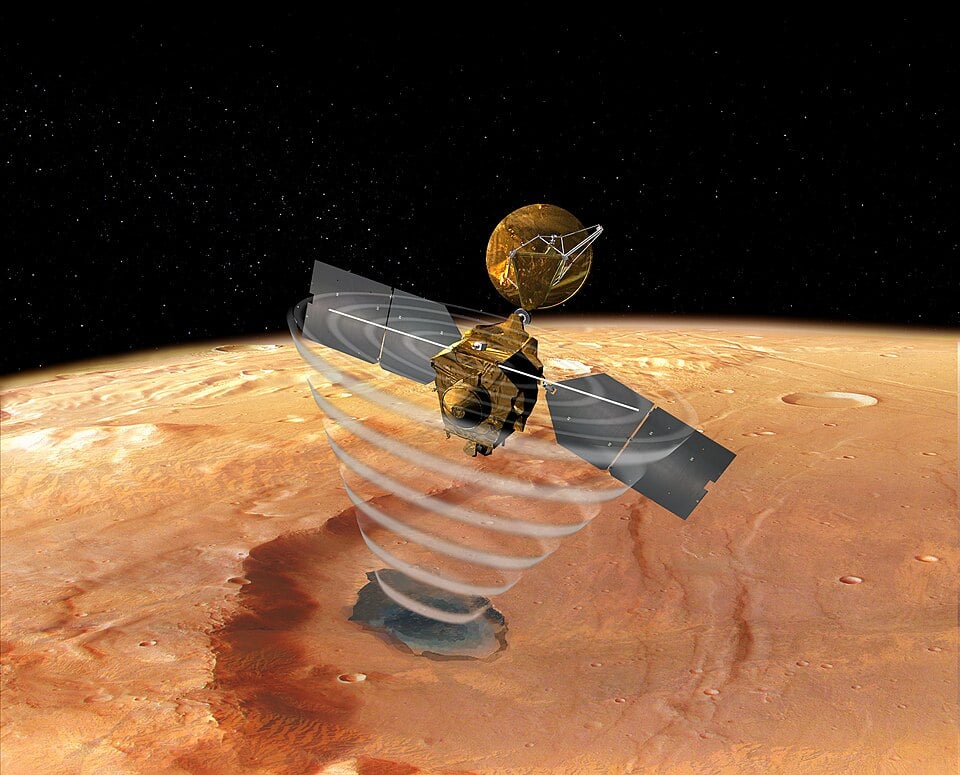The Mars Reconnaissance Orbiter (MRO), launched by NASA in 2005, is orbiting Mars tasked with studying its atmosphere, surface, and subsurface in unprecedented detail. Equipped with a suite of advanced instruments—including high-resolution cameras, spectrometers, and the SHAllow RADar (SHARAD) MRO has revolutionised our understanding of Martian geology, climate history, and potential water reservoirs beneath the surface. Beyond science, it also plays a vital role in relaying data from other Mars missions back to Earth.
SHARAD is perhaps one of its most powerful tools designed to probe beneath the surface and reveal features. However, SHARAD's placement on the side of the spacecraft—opposite the imaging payload has since it began operations, limited its effectiveness. To compensate, MRO has routinely executed roll manoeuvres of up to 28°, slightly tilting the spacecraft to boost the signal-to-noise ratio (S/N) of radar echoes returned from below the surface.
Now, thanks to new modelling efforts, MRO is taking a bold leap forward. Recent simulations by a team led by Nathaniel E. Putzig from the Planetary Science Institute suggested that dramatically increasing the roll angle up to 120°, could improve SHARAD's signal clarity by approximately 10 decibels compared to standard nadir-pointing observations. Acting on this prediction, mission controllers initiated a limited series of "very large roll" (VLR) experiments to test the impact of these extreme manoeuvres on radar performance.
Since May 2023, three such VLR manoeuvres and observations have been conducted, and the results have exceeded expectations. The signal to noise ratio improved significantly by 9, 11, and 14 dB in the respective passes allowing SHARAD to detect features at depths never before seen. In the low-dielectric Medusae Fossae region, radar signals penetrated as deep as 800 meters, while in the icy terrains of Ultimi Scopuli, echoes reached depths of 1,500 meters. In both cases, researchers were able to identify basal layers critical markers for understanding Mars's geological and climatic history. The second VLR pass also revealed enhanced reflections throughout the entire ice column, offering fresh insights into the internal structure of the Martian polar ice.
 Image of Medusae Fossae on Mars (Credit : NASA)
Image of Medusae Fossae on Mars (Credit : NASA)
Even in the more challenging high dielectric terrain of Amazonis Planitia, the third VLR manoeuvre brought improved continuity of a known subsurface interface, although it did not reveal any deeper layers. Encouraged by these successes, the MRO mission team plans to conduct additional VLR observations across Mars's polar regions, midlatitude glaciers, and other areas rich in ice, sediment, and volcanic deposits.
With this bold new approach, MRO continues to push the boundaries of planetary science literally rolling over to unlock Mars's deepest secrets.
 Universe Today
Universe Today

.jpg) Artist's concept of NASA's Mars Reconnaissance Orbiter (Credit : NASA/JPL/Corby Wast)